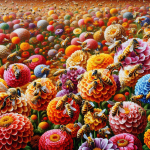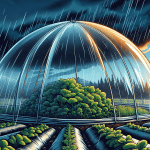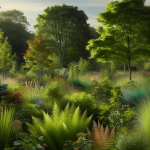This post may contain affiliate links. As an Amazon Associate, we may earn commissions from qualifying purchases.
Have you ever felt the need for a sanctuary in your own backyard, a place where you can unwind without worrying about prying eyes? If you have, you’re not alone. Many homeowners dream of creating a tranquil oasis shielded from the outside world. One effective and natural way to achieve this is by using plants as privacy screens. You might be wondering, “What are the best plants for creating a natural privacy screen?” Well, let’s get into it!
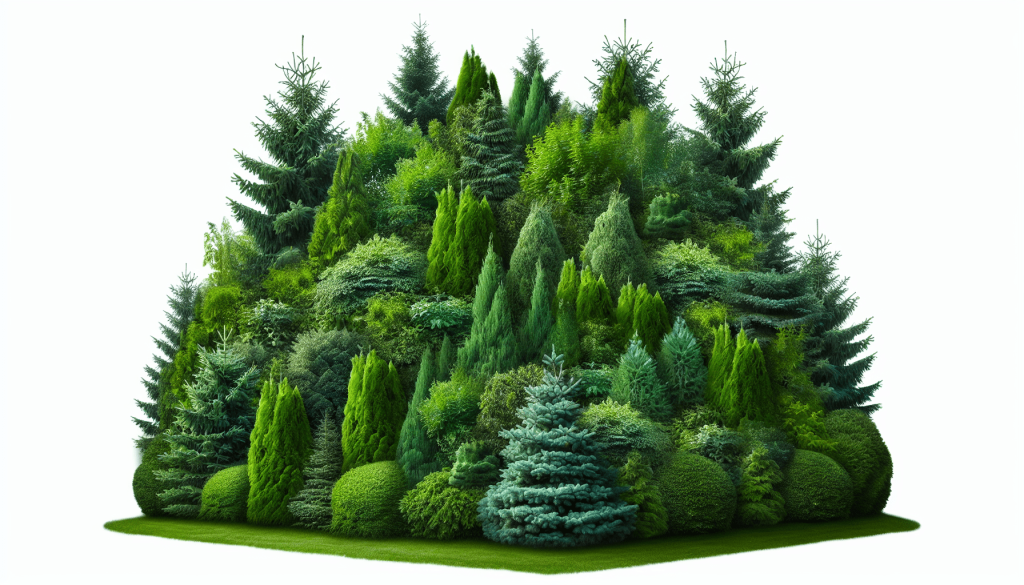
Understanding Privacy Screen Plants
Creating a natural privacy screen with plants can be both an art and a science. Not only will these plants serve as a practical barrier, but they can also add beauty and value to your property.
First, let’s understand what makes a good privacy plant. These plants generally need to be fast-growing, maintain foliage year-round (if you’re looking for continual privacy), and be dense enough to block views. Moreover, the best plants will complement your specific climate and soil conditions.
Things to Consider
When choosing privacy screen plants, you should consider several factors:
Growth Rate
How quickly do you want your screen to be effective? Fast-growing plants like bamboo can create a wall in just a couple of years, but they require more maintenance. Slow-growing plants such as deciduous trees might take longer to fill out but can bring a more permanent structure.
Maintenance
Some plants can be high-maintenance, requiring frequent pruning and care, while others can be relatively low-maintenance. Decide how much time and effort you’re willing to put into caring for your privacy screen.
Climate and Soil Conditions
Always choose plants that will thrive in your local climate and soil. There’s no point in planting something exotic if it can’t withstand your region’s winters or dry spells.
Types of Plants for Privacy Screens
There are various types of plants you can use to achieve the kind of privacy you desire. Each type brings its unique benefits and drawbacks.
Evergreen Shrubs
Evergreens are fantastic year-round privacy providers because they maintain their foliage through all seasons. Here are some popular choices:
| Plant Name | Growth Rate | Maintenance Needed | Hardiness Zones | Height (when mature) | Special Features |
|---|---|---|---|---|---|
| Leyland Cypress | Fast | Moderate | 6-10 | 60-70 ft | Very fast-growing, dense foliage |
| Arborvitae | Moderate | Low | 2-7 | 10-15 ft | Winter hardy, low maintenance |
| Hollies | Slow to Moderate | Moderate | 5-9 | 15-25 ft | Bright berries, dense foliage |
Bamboo
An exotic yet practical option, bamboo is well-known for its incredible growth rate and dense coverage.
| Plant Name | Growth Rate | Maintenance Needed | Hardiness Zones | Height (when mature) | Special Features |
|---|---|---|---|---|---|
| Clumping Bamboo (Fargesia) | Moderate to Fast | Low to Moderate | 5-9 | 6-14 ft | Non-invasive, hardy |
| Running Bamboo (Phyllostachys) | Fast | High | 5-9 | 20-30 ft | Can spread aggressively |
Running bamboo can be invasive, so if you choose this type, it’s essential to install barriers to keep it contained.
Deciduous Trees
Although they lose their leaves in winter, deciduous trees can offer fantastic seasonal privacy.
| Plant Name | Growth Rate | Maintenance Needed | Hardiness Zones | Height (when mature) | Special Features |
|---|---|---|---|---|---|
| Red Maple | Fast | Low | 3-9 | 40-70 ft | Beautiful fall color |
| River Birch | Fast | Low to Moderate | 4-9 | 40-70 ft | Attractive bark, hardy |
| American Hornbeam | Slow | Low | 3-9 | 20-35 ft | Dense foliage, bird-friendly |
Flowering Shrubs
If you’re looking to add a splash of color and beauty along with your privacy, flowering shrubs can be an excellent choice.
| Plant Name | Growth Rate | Maintenance Needed | Hardiness Zones | Height (when mature) | Special Features |
|---|---|---|---|---|---|
| Lilac | Moderate | Low | 3-7 | 6-15 ft | Fragrant blooms, vibrant colors |
| Forsythia | Fast | Low | 3-9 | 8-10 ft | Bright yellow flowers in early spring |
| Rose of Sharon | Moderate | Low to Moderate | 5-9 | 8-12 ft | Long blooming period, hardy |
Specific Plant Recommendations
Depending on your needs—whether for the front yard, backyard, or even a patio—you can find plants that perfectly suit the specifics. Here are some tailored recommendations:
For Small Yards
If space is limited, you can still create an effective and attractive privacy screen. Smaller plants or those that can be pruned to fit confined spaces will work best.
- Boxwood: Ideal for small areas, easily pruned into tight hedges.
- Dwarf Arborvitae: Compact size makes it suitable for limited space.
For Large Properties
For those fortunate to have larger properties, bigger and taller plants can offer extensive coverage.
- Leyland Cypress: Quickly fills out a large space.
- Eastern White Pine: A majestic option with wide spread and height.
For Patio Privacy
When creating privacy on a patio or around a sitting area, consider using potted plants or trellises adorned with climbing plants.
- Potted Bamboo: Contains spread, ideal for patio.
- Climbing Roses: Adds beauty and fragrance to your privacy screen.
Tips for Planting and Maintenance
Once you’ve chosen the perfect plants for your privacy screen, it’s essential to plant and care for them properly. Here are some tips to help you succeed:
Choosing the Right Time to Plant
The best time to plant most privacy screen plants is during the early spring or late fall. This timing gives the roots enough time to establish before the extreme weather conditions of summer or winter arrive.
Proper Spacing
Overcrowding plants will lead to competition for nutrients and water, potentially stunting their growth.
- Trees: Typically require more room, space them 15-20 feet apart.
- Shrubs and Bamboo: Can be spaced closer, around 5-10 feet apart for quicker coverage.
Watering
Consistent watering after planting is crucial for root establishment. Newly planted trees and shrubs often need more water than mature ones.
Fertilization
Regular fertilization will encourage healthy growth. Use a balanced, slow-release fertilizer. Be cautious not to over-fertilize as it can harm your plants.
Pruning and Trimming
Regular pruning ensures your plants remain healthy and dense. It also allows you to shape the plants to fit your aesthetic and practical needs. Here are a few tips:
- Use sharp and clean tools: To prevent disease.
- Prune at the right time: For flowering shrubs, prune after blooming.
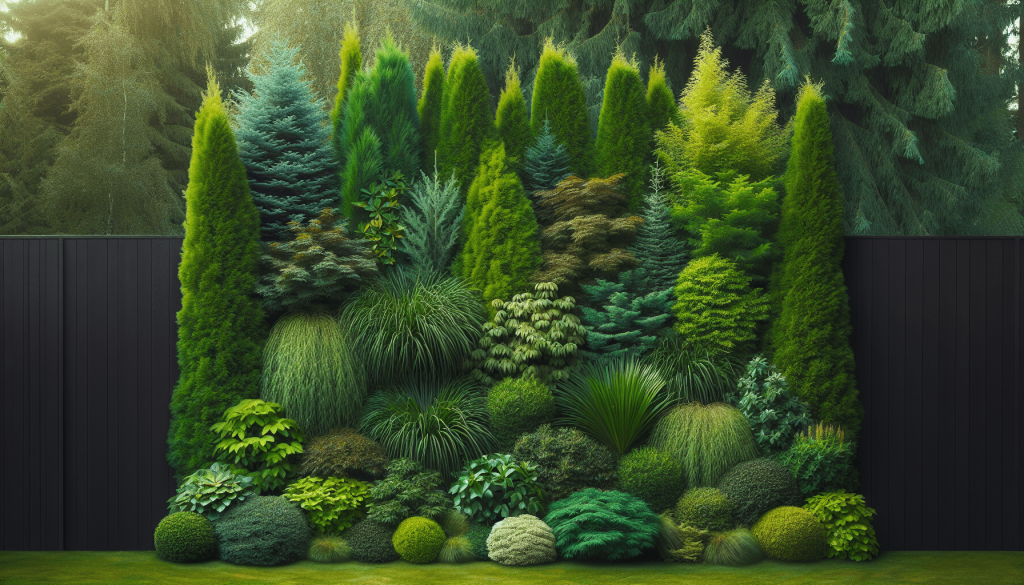
Dealing with Challenges
Even with the best planning, you might face some challenges when growing a natural privacy screen. Here’s how to tackle some common issues:
Pests and Diseases
Monitor your plants for signs of pests and disease. Early detection and treatment can save your plants from severe damage.
- Aphids and mites can often be handled with insecticidal soap.
- Fungal issues may need fungicide applications and better air circulation.
Climate Challenges
If you live in an area with extreme weather conditions, choose more resilient plants. Drought-resistant plants or those that can withstand heavy snowfall are less likely to suffer.
Invasive Plants
Be cautious with fast-growing plants like running bamboo, which can become invasive. Regularly check and contain their growth.
Environmental and Aesthetic Benefits
Choosing plants for creating a natural privacy screen isn’t just about blocking views—it’s about enhancing your living space.
Environmental Impact
Plants contribute positively to the environment by:
- Reducing noise pollution: Dense foliage can serve as a sound barrier.
- Improving air quality: Plants absorb pollutants and release oxygen.
- Providing wildlife habitats: Birds, butterflies, and beneficial insects can make your garden their home.
Aesthetic and Value Addition
A well-designed plant screen can:
- Increase property value: A lush, green landscape is attractive to potential buyers.
- Add beauty: Flowers, berries, and varied foliage can make your garden a visual treat.
- Create multi-functional spaces: Use plants to section off areas for relaxation, dining, or even a small garden within a garden.
Making the Final Decision
Choosing the best plants for creating a natural privacy screen comes down to balancing your practical needs with aesthetic preferences. Consider the specific conditions of your property and your willingness to maintain the plants. With the right choices, you’ll soon have a beautiful, private sanctuary that offers comfort, beauty, and a slice of nature.
Remember, the plants you choose today will be part of your landscape for years to come. Take the time to plan and select wisely, and you’ll create not just privacy, but an extension of your home that offers peace and delight.

